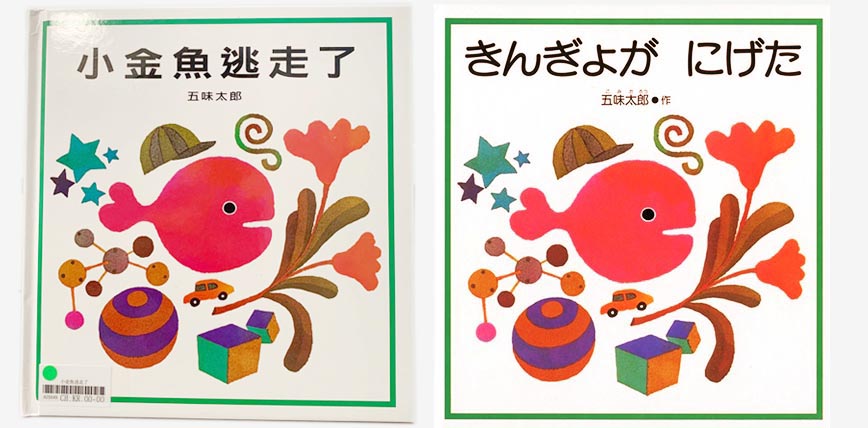Chinese Teacher Ms. Po-Man Shum Shares Her Unforgettable Memories at Pathways
Ms. Shum is a hard-working teacher. She is always deep in concentration preparing for class when you meet her at Pathways. During her close to 10 years tenure as a teacher, she has come across students with different special education needs (SEN), such as physical disability, intellectual disability, visual impairment, attention deficit/hyperactivity, autism spectrum disorder. At Pathways her focus of course is on students with dyslexia. To her, they are students who have varying learning difficulties and need professional intervention. With experience gathered from mainstream schools supporting students with special education needs, she understands the kind of pressure students with dyslexia are facing and knows how to steadily help them especially to increase their self-confidence.
Below Ms. Shum shares her world of teaching at Pathways…..

By using the original Japanese “Where’s the Fish?”, the most unforgettable class was created.

The Most Memorable Class
That was the class where the picture book “Little Goldfish Escaped” was used as teaching material. This is a classic work by Japanese picture book writer Gomi Taro. I happened to buy the Japanese version while travelling in Japan.
During the first lesson, I asked my two primary one students: “Can you read if you are illiterate?” One of them shook his head and hands. The other one said you can look at the pictures. Then I showed the Japanese version of “Little Goldfish Escaped”, pointed to the words 「きんぎょが にげた」, and asked them to read the name of the book. Naturally they could not read it. Then I said, ”Neither can I. Why don’t we try and see if we can understand it by going through the book?”
During that class, we went through 《きんぎょが にげた》 three times. The first time, the students told the story while looking at the pictures. The second time, they tried to guess what the words in Japanese were saying. The third time they read it, I encouraged the students to write the words or sentences on post-it-notes and stick them onto the book. As soon as they heard they had to write, they started moaning and groaning. But when I told them this was to help the other lower grade students to read the book, they immediately sat upright and tried to convert the verbal language into written language sentence by sentence. I wrote the sentences on the whiteboard, and they carefully copied them onto the post-it-notes. Finally they read their created version confidently.
When the next lesson came, I showed the students the Chinese edition of “Little Goldfish Escaped”. They were very surprised and could hardly wait to read it. After reading it once, I turned to their ‘created’ Japanese version of “Little Goldfish Escaped” and asked them to compare the two versions. Like detectives, they went through each word and sentence to compare their similarities and differences. When they came to a sentence which was exactly the same, they screamed in excitement! I praised them for becoming young writers, as great as Gomi Taro. They left that class feeling very satisfied.

The Most Memorable Student
Student A on his first day of class, entered the classroom pouting and looking angry. He said without even greeting the teacher, ”I don’t know any words, I don’t know anything!”
Teacher: “Do you know how to count?”
Student A: “I know how to count, but I don’t know any Chinese words.”
Teacher: “Not even one single Chinese word?”
Student A: “No!”
Teacher: “That can’t be true.”
Student A: “I’m not lying, I really don’t know one single Chinese word.”
Teacher: “You must at least know 3 words!”
Student A looked puzzled. The teacher wrote the student’s name on a piece of paper and asked him to read it. He read it aloud immediately.
Teacher: “I thought you said you didn’t know any Chinese words.”
Student A laughed.
Two years later, his mother told me what he said one night when they were having a tete-a-tete talk. The student told her since he was learning Chinese and Mathematics at Pathways, he only had to go to Pathways and did not have to go to school. The parent’s intention was to share with me the fact that the student liked to come to Pathways to learn, but it led me to think how long had the student been harbouring this thought in his mind.
The Most Unforgettable Parent
A parent used her spare time to teach the student writing at home. She saved the “model essays” to cope with his tests and exams, filling up several exercise books.
Several exercise books filled with model essays! I cannot imagine how much time and effort that took. If it were me, I wonder if I would have had the persistence to do so.
Ms. Shum has been in the education field for many years. She understands well that the more one learns and teaches, the more one realizes the difficulties
and has increasingly discovered her own deficiencies. There are times when she feels discouraged, but she is thankful to Pathways in providing teachers opportunities to try different ways of effective teaching.

Challenges of The New Learning Era
In response to the pandemic forcing face-to-face teaching to be halted, Ms. Shum had to adapt to the new learning era like other teachers and switched to teaching online. In the process of change, the biggest challenge was the need to reproduce teaching material which must not only attract students’ attention with pictures and texts, but also think of ways to interact with each other to get immediate feedback.
To be more well-prepared, she searched for different interactive teaching materials on the Internet, tried about 20 games, did role-playing with other Pathways teachers, and simulated online classes in the strive for excellence.
When asked what words of encouragement can be given to children with dyslexia and their parents, one famous saying came to Ms. Shum’s mind: “God closes one door and opens another window.“ Some may think it is a cliché, however it brings out an important positive message of encouragement that there is no need to dwell on the disabilities of these children, and instead, through the support of teachers and parents, they are given some opportunities for success along the way to make them feel that “I can do it”.
Source from 2019-20 Annual Report
